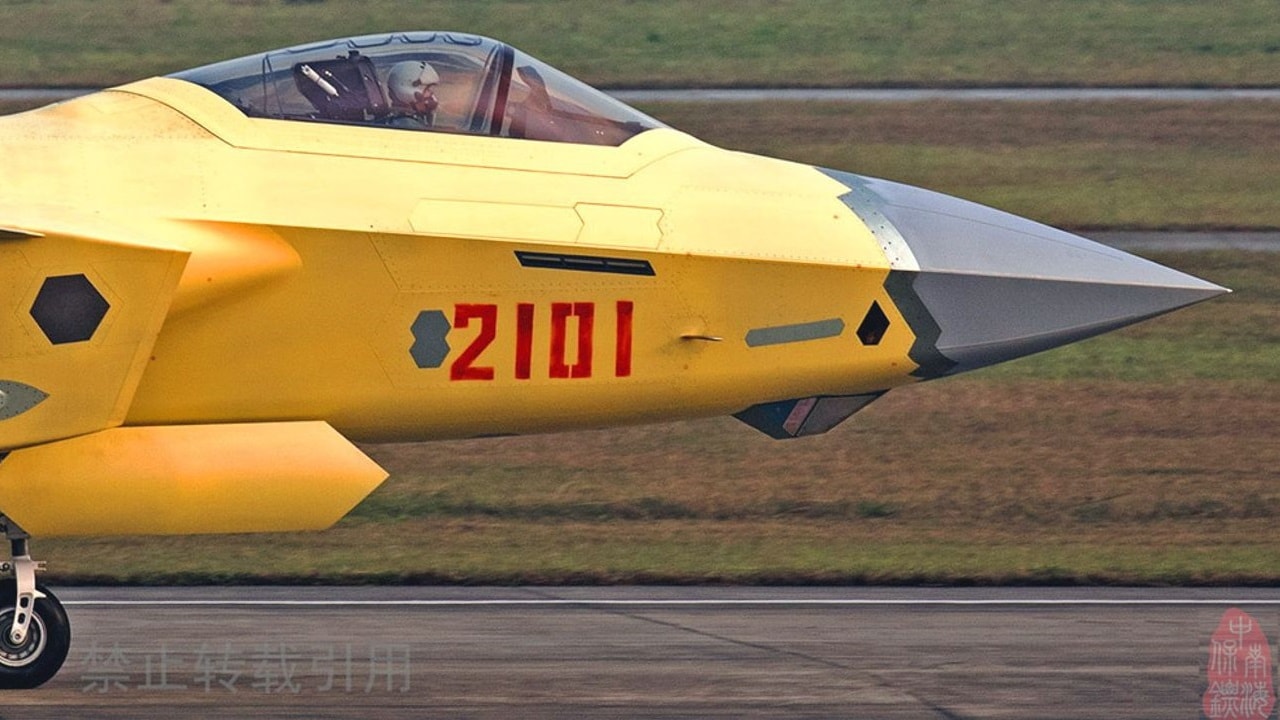Kris Osborn

China has started to assemble a force of stealthy, heavily armed fifth-generation fighter aircraft such as the J-20 and the carrier-launched J-31. The emergence of these aircraft raises the critical question of how the Chinese force would perform against the U.S. Air Force’s world-leading fifth-generation aircraft, the F-22 and F-35.
Much remains unknown about the performance parameters of China’s new aircraft. There is widespread concern, however, that both the J-20’s and J-31’s external configurations appear to be straightforward copies of American fifth-generation stealth technology. Reports from Congress, the Pentagon, and the media highlight the obvious similarities between Chinese and U.S. fifth-generation aircraft.
The People’s Liberation Army Air Force has already produced a fleet of J-20s and has announced plans for many more. The carrier-launched J-31 seems to be at a much earlier stage in its development. These aircraft are technically newer than the F-22 and F-35, and they do appear to replicate some design specs, but it is far from clear whether Chinese aircraft can rival the computing, sensing, weapons delivery, or networking capabilities of the F-35 and F-22.
China’s J-20 and J-31 Stealth Fighters
Certainly the J-20 and J-31 are an attempt by a great power rival to match or even outperform the F-35. To do so, a rival aircraft would need to display a handful of specific attributes. Perhaps first among these is the simple existence of three F-35 variants. At the moment, it does not appear that any rival nation operates an F-35B-like vertical take-off and landing fifth-generation aircraft able to operate from smaller-deck amphibious assault ships. Nor is it clear any rival nation operates a carrier-launched F-35C equivalent. The Chinese are of course engineering the J-31 for carrier-launch operations, but we do not know how far along this aircraft is.
Beyond mere configuration, there is a number of key technological attributes Chinese offerings might be challenged to replicate, such as sensor range and fidelity, AI-enabled computing, threat library mission data files, flight automation, weapons envelope, manned-unmanned teaming and fleet-wide data link networking.
In terms of pure speed, the J-20 is reported to be faster than the F-35, yet not as fast as the F-22 Raptor. The J-20 is listed as being able to operate at a max speed of Mach-2.0, and the J-31 is slated for speeds up to Mach-1.8. These both fall short of the F-22’s Mach-2.25 speed, yet exceed the F-35’s top speed of Mach-1.6. The F-22 also has the most advanced thrust-to-weight ratio in the world and is therefore able to maneuver, vector, and out-run enemy air-to-air and air-to-ground missiles in ways that are likely unrivaled.
The J-20 does operate with a bomb-truck-like capacity to deliver more ordnance than an F-35 on a single mission. It can take off with 27,998 pounds of internal and external ordnance. Compare that to the F-35, which in beast mode can travel with 18,000 pounds of weapons. The J-31 can also travel with a heavy load of weapons, and its maximum take-off capacity is listed at 28,000 kg.
A full internal and external weapons complement, however, would compromise stealth by generating a larger and more precise radar return signal to adversary air defenses.
While an entire essay could be written about each of these particular categories, one clear and perhaps greatly impactful F-35 advantage shown in wargames is the range and fidelity of its targeting and sensors. These systems are enabled by high-speed data integration and processing, or “sensor fusion,” and they can reach unprecedented ranges.
Wargames using the F-35 as well as live fire exercises such as the Air Force’s Red Flag have shown that an F-35 can see and destroy large formations of enemy fighters from standoff distances where it cannot be detected by an enemy. In several wargames, a single F-35 has proven able to see, identify, and destroy large numbers of enemy airplanes without placing itself within a line of fire.
If a Chinese J-20 does not have targeting sensors or computing comparable to the F-35, its other attributes would matter little. Whichever aircraft is best able to complete the OODA Loop (Observation, Orientation, Decision, Action) and operate ahead of an enemy’s decision cycle is likely to prevail, destroying the enemy faster than it can be hit itself.
Completing this process requires expedited sensing, computer processing, data analysis, and integration, all F-35 attributes that may or may not be matched by adversary fifth-generation aircraft.
Kris Osborn is the Military Affairs Editor of 19FortyFive and President of Warrior Maven – Center for Military Modernization. Osborn previously served at the Pentagon as a Highly Qualified Expert with the Office of the Assistant Secretary of the Army—Acquisition, Logistics & Technology. Osborn has also worked as an anchor and on-air military specialist at national TV networks. He has appeared as a guest military expert on Fox News, MSNBC, The Military Channel, and The History Channel. He also has a Masters Degree in /lComparative Literature from Columbia University.
No comments:
Post a Comment